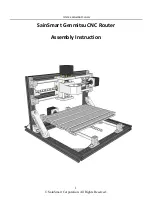
1-5
Harmful gas limit
The equipment room must also meet limits on salts, acids, and sulfides to eliminate corrosion and
premature aging of components, as shown in
Table1-4 Harmful gas limits in the equipment room
Gas
Maximum concentration (mg/m
3
)
SO
2
0.2
H
2
S
0.006
NH
3
0.05
Cl
2
0.01
NO
2
0.04
To control harmful gases, use the following guidelines:
•
Use environmentally friendly materials to decorate the equipment room. Avoid using materials
that contains harmful gases, such as sulfur or chlorine-containing insulation cottons and rubber
mats.
•
Keep the air inlet of the equipment room away from the pollution source and the sewer.
•
Place batteries separately, preferably in a separate room.
•
Employ a professional company to monitor and control harmful gases in the equipment room
regularly.
EMI
All electromagnetic interference (EMI) sources, from outside or inside of the router and application
system, adversely affect the router in the following ways:
•
A conduction pattern of capacitance coupling.
•
Inductance coupling.
•
Electromagnetic wave radiation.
•
Common impedance (including the grounding system) coupling.
To prevent EMI, use the following guidelines:
•
Take effective measures to filter interference from the power grid.
•
Separate the working earthing system of the router from the grounding facility and lightning
protection facility of the other electrical devices as far as possible.
•
Keep the router far away from radio transmitting stations, radar stations, and high-frequency
devices.
•
Use electromagnetic shielding, for example, shielded interface cables, when necessary.
Grounding
Correctly grounding the router is crucial to lightning protection, anti-interference, and ESD
prevention. Use a good grounding system for the router. Make sure the resistance between the
chassis and the ground is less than 1 ohm.
For more information about grounding the router, see "Grounding the router."
































